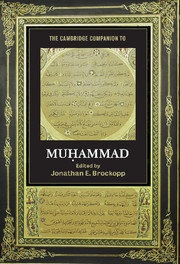2 - Muḥammad’s message in Mecca: warnings, signs, and miracles
from Part I - Muḥammad in his world
Published online by Cambridge University Press: 28 May 2010
Summary
In the previous chapter, Walid Saleh describes the many portents from Muḥammad's early life that set the stage for his ultimate role as prophet to Arabia. Such miraculous events are said to have continued throughout the Prophet's life, confirming his mission and demonstrating his personal connection to God. The present chapter looks more closely at the differences between the two major sources for Muḥammad's life, namely the Qur'ān, on the one hand, and the extra-Qur'ānic sources, on the other hand. The latter include the compilations of tafsīr (Qur'ānic exegesis), Sīra (Muḥammad's biography), and ḥadīth (tradition). The comparative analysis will focus on Muḥammad's image as emerging in his Meccan period, which stretches from the moment when he first received revelation, through his first attempts at preaching God's warning and promise to the people of Mecca, and up to their final rejection of him. This rejection resulted in Muḥammad's flight (hijra) to the oasis of Yathrib, later to be known as Medina. When we read the Qur'ānic Meccan passages alone, without benefit of post-Qur'ānic interpretation, Muḥammad emerges as a mortal prophet who still has no miracle other than the Qur'ān, the book he received from God over the last twenty-two years of his life, first in Mecca (610-622 CE) and then in Medina (622-632). Muḥammad appears in these passages as a man who both warns of the oncoming Judgment Day and brings God's message of mercy.
- Type
- Chapter
- Information
- The Cambridge Companion to Muhammad , pp. 39 - 60Publisher: Cambridge University PressPrint publication year: 2010
- 7
- Cited by

